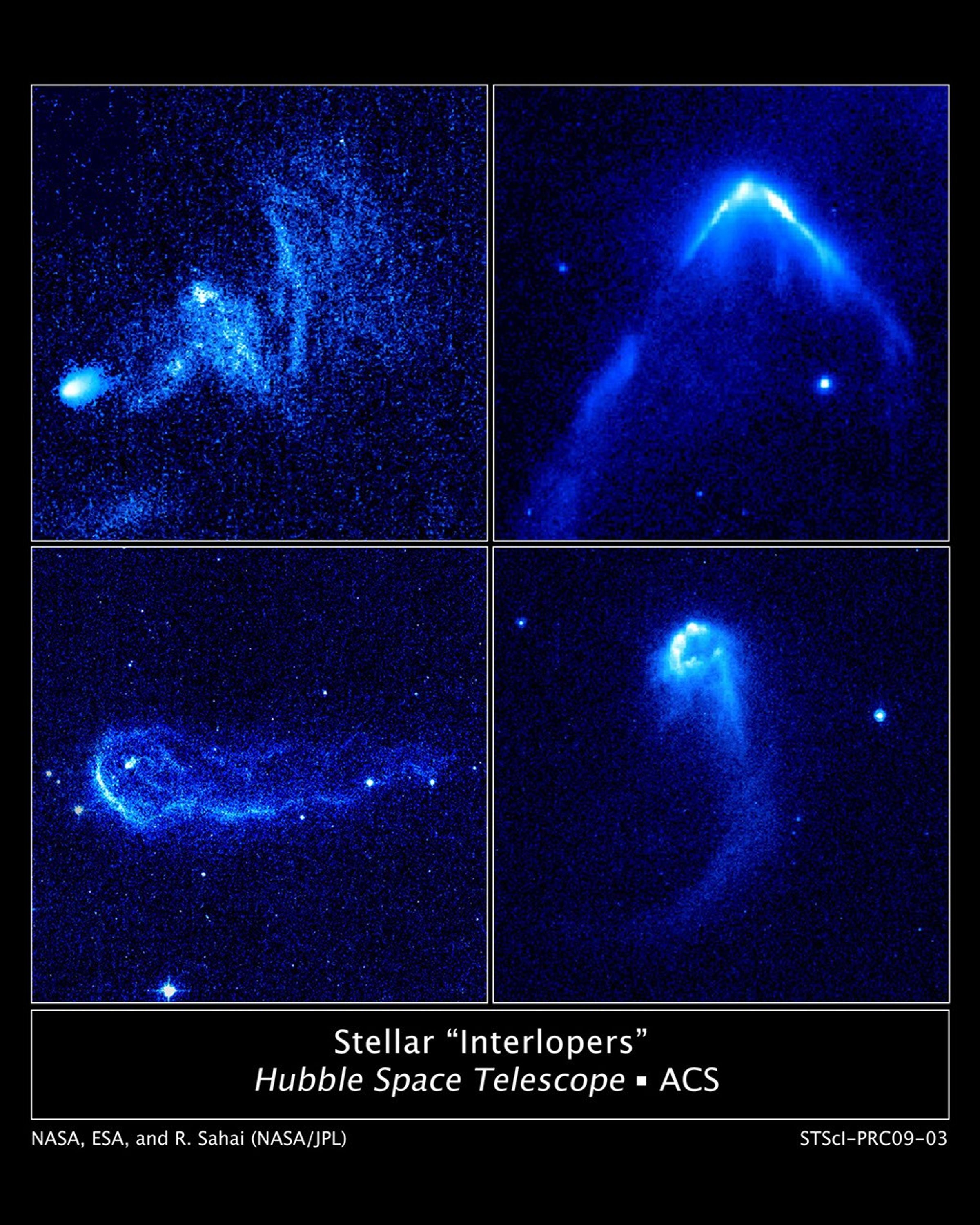1 min read
Stellar Interlopers Caught Speeding Through Space

Resembling comets streaking across the sky, these four speedy stars are plowing through regions of dense interstellar gas and creating brilliant arrowhead structures and trailing tails of glowing gas.
These bright arrowheads, or bow shocks, can be seen in these four images taken with NASA's Hubble Space Telescope. The bow shocks form when the stars' powerful stellar winds, streams of matter flowing from the stars, slam into surrounding dense gas. The phenomenon is similar to that seen when a speeding boat pushes through water on a lake.
The stars in these images are among 14 runaway stars spotted by Hubble's Advanced Camera for Surveys. The stars appear to be young, just millions of years old. Their ages are based on their colors and the presence of strong stellar winds, a signature of youthful stars.
Depending on their distance from Earth, the bullet-nosed bow shocks could be 100 billion to a trillion miles wide (the equivalent of 17 to 170 solar system diameters, measured out to Neptune's orbit). The bow shocks indicate that the stars are moving fast, more than 112,000 miles an hour (more than 180,000 kilometers an hour) with respect to the dense gas they are plowing through. They are traveling roughly five times faster than typical young stars, relative to their surroundings.
The high-speed stars have traveled far from their birth places. Assuming their youthful phase lasts only a million years and they are moving at roughly 112,000 miles an hour, the stars have journeyed 160 light-years.
The Hubble observations were taken between October 2005 and July 2006.
About the Data
- Data DescriptionData DescriptionProposal: A description of the observations, their scientific justification, and the links to the data available in the science archive.
Science Team: The astronomers who planned the observations and analyzed the data. "PI" refers to the Principal Investigator.Science Team: These images were created from HST archival data. The science team is led by R. Sahai (NASA/Jet Propulsion Laboratory; HST Archival Proposal 10681). - InstrumentInstrumentThe science instrument used to produce the data.HST>ACS
- Exposure DatesExposure DatesThe date(s) that the telescope made its observations and the total exposure time.October 2005 and July 2006
- FiltersFiltersThe camera filters that were used in the science observations.F606W (V) and F814W (I)
- Object DescriptionObject DescriptionThe type of astronomical object.Stellar Bow Shocks
- Release DateJanuary 7, 2009
- Science ReleaseHubble Finds Stars That ‘Go Ballistic’
- Credit
Share
Details
Claire Andreoli
NASA’s Goddard Space Flight Center
Greenbelt, Maryland
claire.andreoli@nasa.gov



































